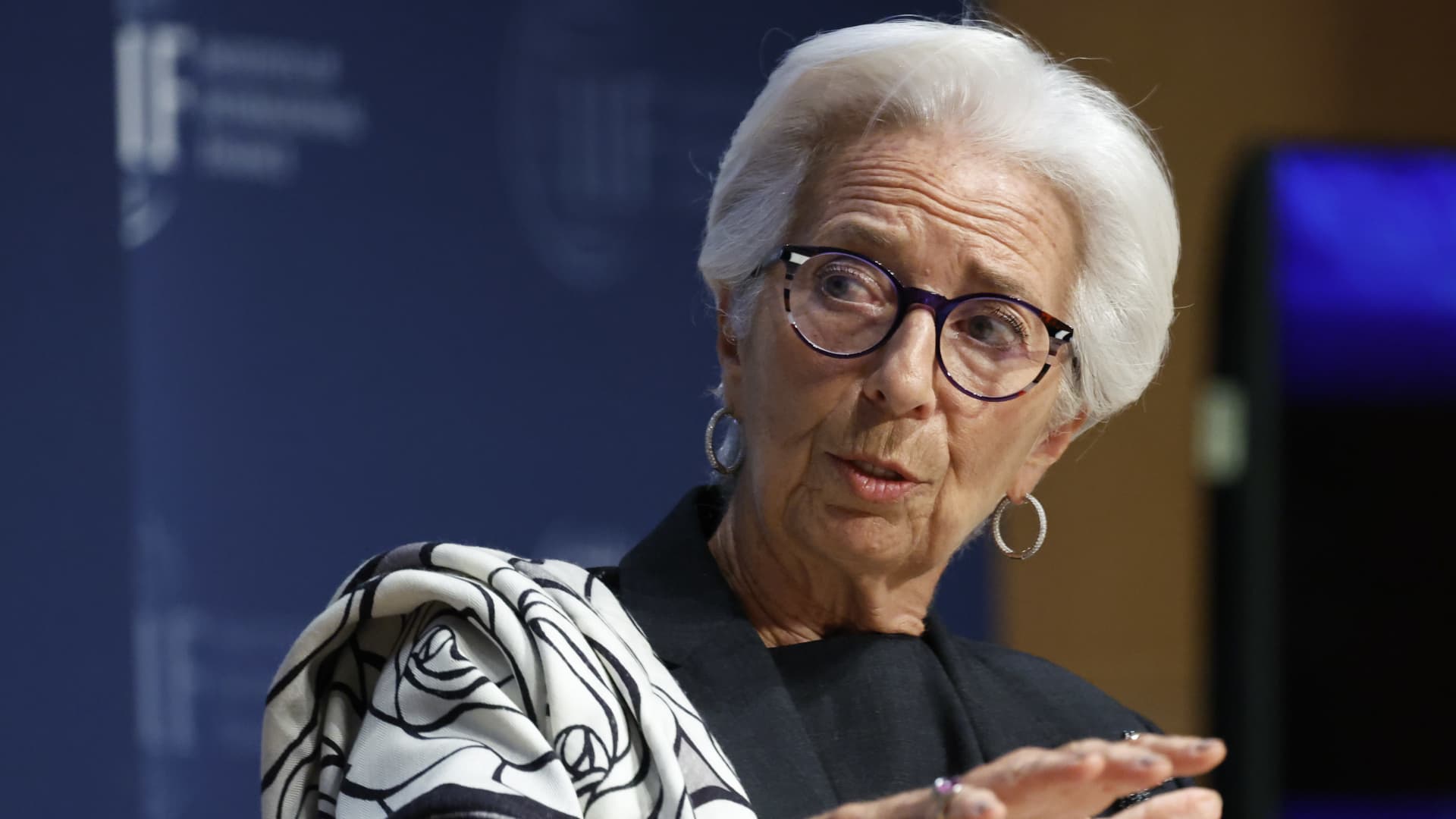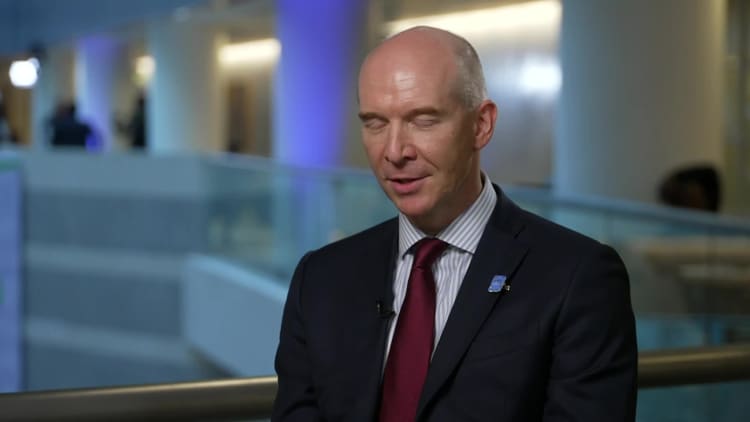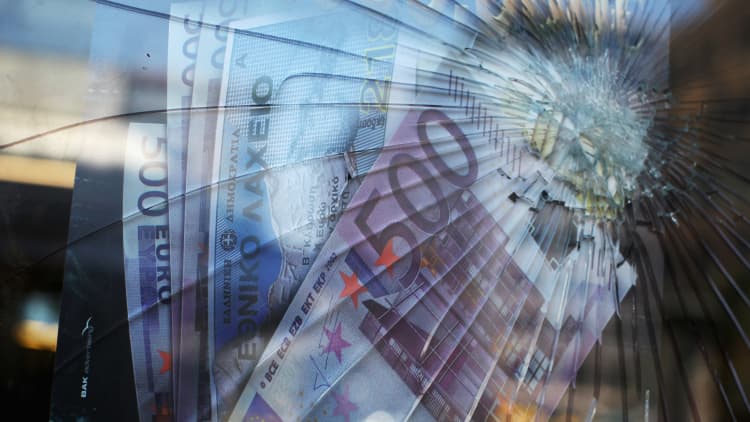
Christine Lagarde, president of the European Central Bank, is expected to announce another 75 basis points hike.
Bloomberg | Bloomberg | Getty Images
While the European Central Bank is largely expected to announce another rate hike Thursday, market players are seemingly more concentrated on two other policy tools as the region edges toward a recession.
The central bank has been contemplating inflation being at record highs but an economy that is slowing, with many economists predicting a recession before the end of the year. If the ECB takes a very aggressive stance in increasing rates to deal with inflation, there are risks that it tips the economy into further trouble.
Amid this context, the ECB is widely seen raising rates by 75 basis points later this week. This would be the second consecutive jumbo hike and the third increase this year.
“The ECB will likely raise its three policy rates by 75 basis points and suggest that it will go further at its next few policy meetings without providing a clear guidance on the size and number of steps to come,” Holger Schmieding, chief economist at Berenberg, said in a note Tuesday.
Given the inflationary pressures — the September inflation rate came in at 10% — analysts are pricing in at least another 50 basis point hike in December. The bank’s main rate is currently at 0.75%.
“A growing consensus seems to be in favour of having the deposit rate at 2% by the end of the year, implying a 50 basis point hike in December, with a reassessment of the economic and inflation outlook in early 2023,” Frederik Ducrozet, head of macroeconomic research at Pictet Wealth Management, said in a note Friday.
Two big questions
Rates aside, there are two questions on the minds of market players that need answering: When will the ECB start unwinding its balance sheet, in a process known as quantitative tightening, and what will happen to the lending conditions for banks in the near future. The ECB has undertaken years of quantitative easing, where it buys assets like government bonds to simulate demand, following the euro crisis of 2011 and the Covid-19 outbreak in 2020.
“When it comes to QT, boring is beautiful,” Ducrozet said, adding that he expects the process to start in the second quarter of 2023. QT is expected “to be predictable, gradual, and passive, starting with the end of reinvestments under the Asset Purchase Programme (APP) but not actively selling bonds any time soon,” he said.
Camille De Courcel, head of European rates strategy at BNP Paribas, said in a note Monday that the central bank might wait until the December meeting to provide details on QT but that it is likely to start reducing its balance sheet by about 28 billion euros on average per month when it does happen.

But perhaps the biggest uncertainty at this stage is whether lending conditions will change for European banks.
“We think Thursday [the ECB] will unveil a decision on the TLTRO, either its remuneration, or its cost. We think the new measure will only come into effect, in December,” De Courcel said.
The targeted longer-term refinancing operations, or TLTROs, is a tool that provides European banks with attractive borrowing conditions — hopefully giving these institutions more incentives to lend to the real economy.
Because the ECB has been increasing rates faster than the central bank initially expected, European lenders are benefiting from the attractive loan rates via TLTROs while also making more money from the higher interest rates.
“The optics are bad against the backdrop of a historical shock to households’ income, and political pressure cannot be ignored,” Ducrozet said.
The euro traded marginally higher against the U.S. dollar on Wednesday at $0.997. The weakness of the common currency has been a concern for the central bank though it repeatedly states that it does not target the exchange rate.

